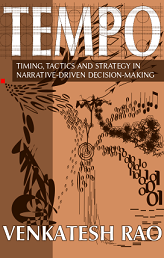
While news of the death of the novel―or of the book, for that matter―may seem no better than clickbait, the time is nigh to ask what next. In its Western variant, the novel built momentum over hundreds of years to become the dominant literary form of the twentieth century; its popularity and penetration dependent on―and responsive to―sometimes vertiginous phase shifts in media, means, markets. In this sense, its history also reads like a (living) fossil of the modern era, from mechanisation to globalisation, from the expansion of literacy to the invention of intimacy.
Given the scope, speed and scale of transformations and disruptions we are currently faced with―many of which the pandemic will consolidate or heighten―it would be remiss of us not to imagine new literary forms coagulating within our lifetimes.
And if the precondition for new forms is, indeed, platforms…
Following the increased concentration of publishing and distribution; a handful of small, aggressively independent presses are now scouting for talent not in the koi-pond of MFA or residency programs but on social media, where it can be found at its most adventurous and unembellished. Business models vary but are central in the push towards autonomy these presses share. They are not manifesto factories, but agile enterprises that are [re]s[e]izing the means of production by taking everything, from their submission software to their bookmaking, into their hands; the way others microbrew beer or cure ham. Nor are these the zines of the nineties: the DIY book has at last hit its stride as a fine art, with objects as impressive as those issued by almost any major house―and better copy editing. The writers championed by these presses are, furthermore, early explorers in peerlessness, encouraged to pursue marginal practices that might be otherwise untenable by one-man editorial orchestras who aren’t tastemakers―a role best reserved for establishment reviewers―but craftsmen and colleagues themselves.
There are precedents, naturally, in presses like Adelphi, or magazines like Sur, with one significant and telling difference: the elective affinities at work here are more exclusively literary than anytime before. These are not groups of friends with similar backgrounds who meet periodically at a café or who attended the same universities. We’re not in Bloomsbury anymore. By and large, these are cadres of strangers from all walks of life―Twitter mutuals―more eclectic in their outputs than entire university departments.
Defamiliarisation is not in the product, but part of the process.




This sounds fascinating—could some examples of these small presses be provided? I’d love to explore their work, but this article doesn’t name any.
It will be indeed interesting to follow the evolution of the novel in these times – I would be curious to jump forward in time some decades and see if new literary forms will, as you say, coagulate. As far as the authors are concerned, however, no matter the level of talent at stake, I really don’t think anything “unembellished” can be found on social media. I believe exhibitionism and affectedness are fundamental traits of any social media text.
I love the painting, thank you for this choice – I’ve just discovered that impressionism still exists (by the way, isn’t 1967 the year of birth of the painter, Peter Brown? see here – https://en.wikipedia.org/wiki/Peter_Brown_(British_artist)
That painting is marked ´15? Not ´67
Ms. Belevan: There’s nothing worse than a shill comment, I know, but given your interest in both independent publishing and experimental Covidian aesthetics ranging from the baroque to the Dostoevskean, it might interest you to know that I’ve recently published the first long-form work of literary fiction about the pandemic, The Quarantine of St. Sebastian House. As a novella—my concession to the pace of the present—it fits well with the artistic tenor described above.